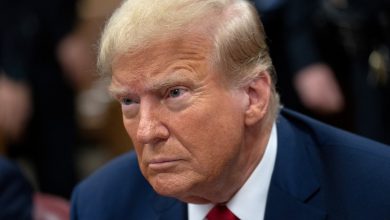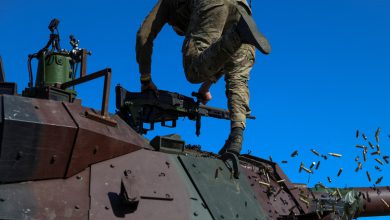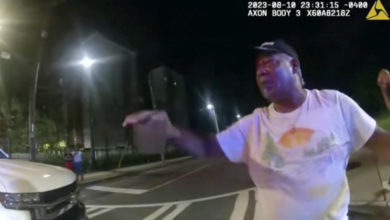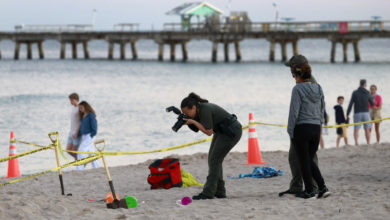How an Oklahoma man double-crossed a Mexican cartel with knockoff guns
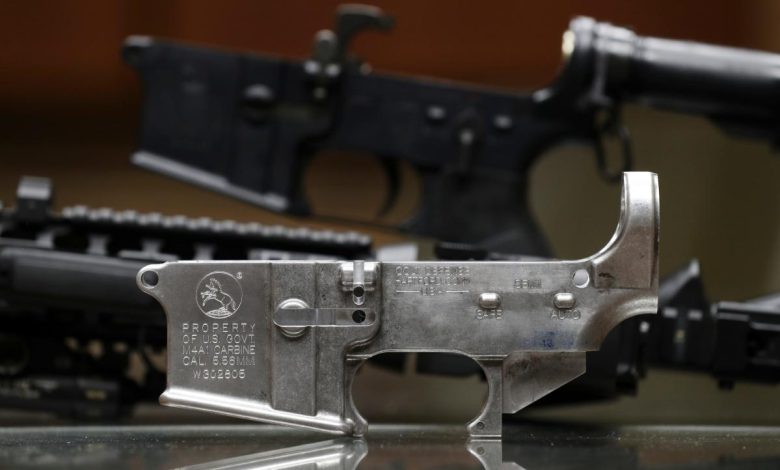
JAY, Okla. — Andrew Scott Pierson’s ordeal started on a remote Oklahoma farm and ended in a cartel hot zone after Mexican officers surrounded him and marched him out of Mexico.
His journey from America’s heartland to life in a volatile border town started in 2012 with his rise to prominence as a gun expert and cartel go-to guy. It ended with his public downfall two weeks before Christmas in 2018 in the middle of a suburban street.
Officers wearing black tactical gear and face masks surrounded him with machine guns inside his gated community in the city of Nuevo Laredo, five miles from the Laredo, Texas, border.
Police put Pierson, then age 43, in the back of their truck the night of Dec. 10, 2018, and drove him to the border. From there, the policemen pulled and tugged Pierson halfway across the Gateway to the Americas International Bridge that stretches across the Rio Grande, their toes nearing a yellow line on the pavement that marks the actual divide of nations.
Pierson, topping 500 pounds, then walked to the American side guided by waiting officers with U.S. Customs and Border Protection.


An officer told Pierson he was under arrest on a fugitive warrant obtained by the U.S. Bureau of Alcohol, Tobacco, Firearms and Explosives on a charge of being a felon in possession of a firearm. But he didn’t know the ATF was mounting a much larger case.
Pierson jeered: “You go into Mexico and you have people drug out by the army for that?”
During a police interview at a nearby Texas jail, Pierson chatted for two and a half hours, sometimes laughing and often boasting, telling the agents with the ATF and Homeland Security Investigations that he didn’t want to make them “starstruck” about his interactions with high-ranking cartel members, including top U.S. targets.
He talked about cartel supervisors’ love of “bling’d out” guns with gold triggers, and how he ordered a boss designer Versace gun grips.
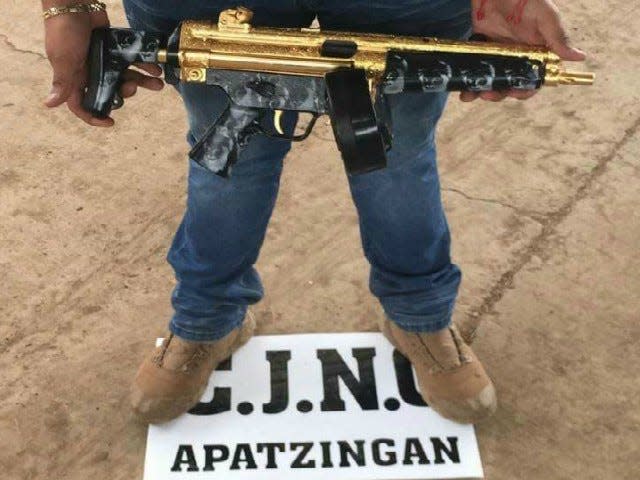

Pierson’s interview and case provides a rare glimpse at the life of an American embedded with a Mexican drug cartel.
He and other U.S. criminals play a key role helping cartels thrive by arming them, since Mexico has only one gun store and limits military-grade weapons to members of its federal police force and military. Some U.S. agents call the incessant southbound flow of guns the “iron river,” and cartel members dub it the “hormiga,” Spanish for ant, akin to an ant trail.
Pierson dodged questions about his own role in trafficking gun parts, including faking out cartel members by selling them homemade assault rifles fraudulently stamped in the U.S. with the prestigious name brand Colt, said Edwin Starr, the ATF special agent who led the effort to send Pierson to prison.
“He knew, if the cartel found out he was giving them counterfeits, that would be bad for him,” Starr said.
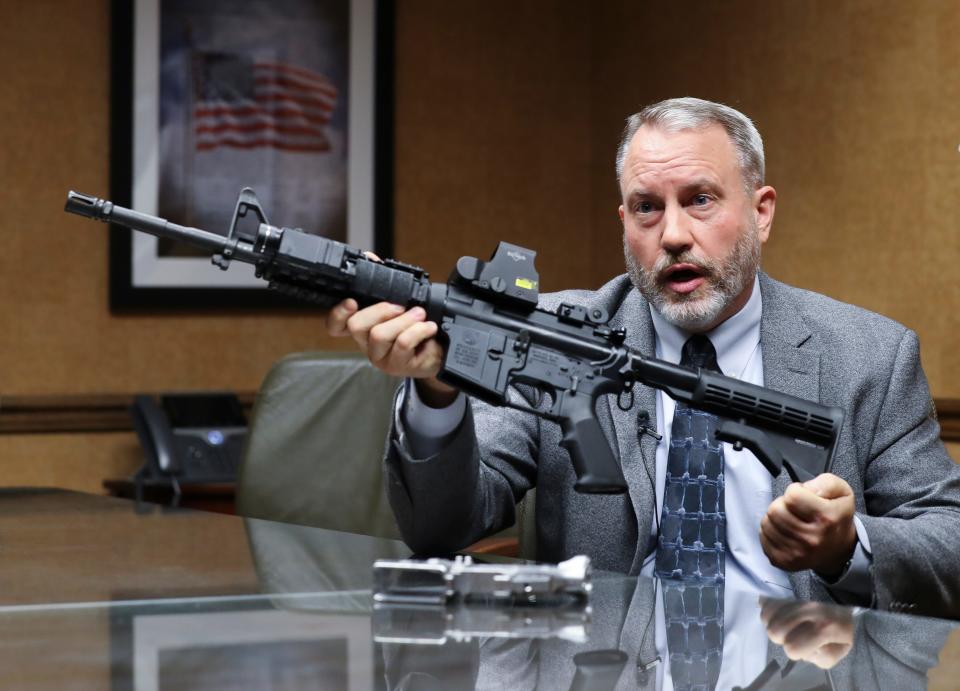

Investigators also believe when guns malfunctioned in Mexico, the cartel paid Pierson to fix them.
When investigators searched Pierson’s home in Mexico as well as his computer and phones, they found a video of a cartel member standing outside on a sunny day trying to fire an assault rifle, while young children are heard happily playing nearby. Agents say the man asked for help in Spanish to fix the weapon, a fake designer gun.
Pierson told agents he’d reveal more of his life in Mexico later, but he never talked to them again.
He pleaded guilty in 2021 to conspiracy to violate the Arms Export Control Act, and a judge sentenced him in 2022 to serve 12 years in federal prison, where parole is not an option.
He had lobbied for a much lighter sentence, but during the hearing, Starr told the judge why Pierson’s crimes matter.
“He’s adding to the quantity of guns that the Mexican cartels are going to use to fight each other and to fight Mexican police,” said Starr, who has since retired.
“Some of that violence isn’t going to stay in Mexico, it’s going to affect the U.S. agents combatting violence along the border, and it is going to spill over into American cities.”
In February, Pierson gave his first public interview during a call from a federal prison in Texarkana to a reporter for the Louisville Courier Journal, part of the USA TODAY Network. He detailed some of his dangerous interactions with cartel members, his business trip to the popular Pacific Coast resort town of Puerto Vallarta and the motive behind the savage murder of one of his closest friends.
“When you cross the dominant cartel in your area, your life expectancy is basically nil,” Pierson said.
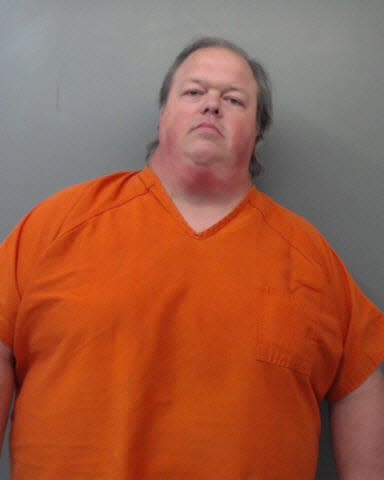

“The border town I worked in was full of sociopaths,” Pierson said of his years in Nuevo Laredo, which he told agents was the “ghetto of narcos.”
Starr testified in court that in Nuevo Laredo, “the level of violence in the intelligence reports I saw described it as historic and horrific.”
This is where Pierson brought his mother, Betty Joann Cook, to live in her own place in 2016, saying she fell behind on bills after a bout with cancer.
“It was either that or a nursing home,” Pierson said.
Agents say Cook told them cartel members planned to move her to a furnished upscale home and use her place as a weapons stash house, reasoning that police wouldn’t suspect an older white lady.
Cook didn’t speak Spanish and felt isolated, becoming so miserable and scared in the cartel-dominated town, she thought of committing suicide by cop, walking down a public street and raising a firearm to cause officers to fire on her, agents claim in court documents.
She ended up finding another way out, despite Pierson’s plan to keep her there.
To piece together Pierson’s crimes and capture, The Courier Journal sifted through court files and transcripts and traveled to Arkansas and Oklahoma to interview agents, prosecutors and the surprising tipster who exposed Pierson’s scheme.
When asked how he got involved with cartels, Pierson told a reporter: “It definitely was strange.”
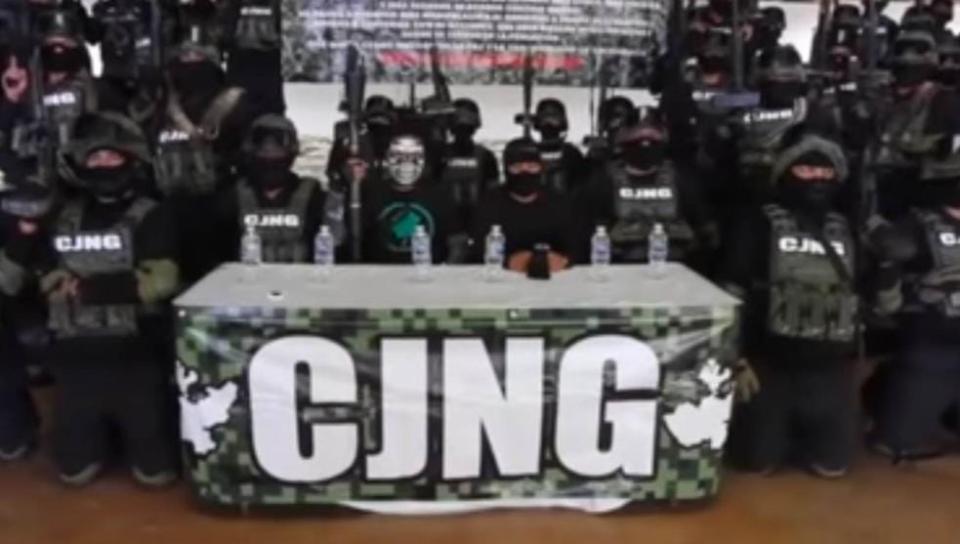

“If I told you how all this got started, you wouldn’t believe me. If I told you I started off as a government informant, what would you say?”
When asked for his confidential source or informant number, the name of his handler and the government agency involved, he declined to answer and shut off all communications.
Starr, the lead ATF agent in the case that sent Pierson to prison, said he checked with other agencies but found nothing to corroborate that story. He concluded that Pierson stayed in Mexico because he was a fugitive on the run from U.S. agents, not secretly working to help them.
In September 2014, ATF agents had raided the Oklahoma farm where Pierson set up his scam inside a large portable building outside his mother’s house, ordering gun parts and forwarding them to a cartel associate in Laredo.
Soon after, Pierson called the Tulsa ATF office and said he was working with cartels near the border and offered to be an informant, reaching Special Agent Carlos Sandoval. Sandoval told him about the search warrant for the farm and advised Pierson to return to the U.S.


Pierson refused and tried his luck by making a similar offer to the U.S. Drug Enforcement Administration in Houston. Pierson, considered unreliable because of his lies, again was rejected.
Starr said agencies use informants to catch a big fish. They didn’t want to make a deal with Pierson because “Pierson was the fish.”
A deadly betrayal
In Nuevo Laredo, Pierson set up an auto diesel repair shop in a building that stretched nearly a block.
He claimed to have local and federal government contracts to work on everything from patrol cars to ambulances and gasoline delivery trucks. He lived in an apartment in the back and claimed Julio Garcia, a member of the notoriously violent Los Zetas cartel, dropped in to demand a “quota,” an extortion or protection fee.
Garcia set up a desk at Pierson’s shop, and the two became friends and eventually roommates.
Years later, while standing before a judge pleading for leniency, Pierson downplayed his involvement with Garcia and the cartel.
But the night of his arrest, he bragged.
“I’m not trying to make y’all starstruck or nothing,” Pierson told U.S. agents. “But it’s been a lot of work for the last six years.”
He described meeting drug lord Miguel Angel Trevino Morales, known as “Z-40,” the co-leader of Los Zetas in 2012. Trevino was captured in 2013 after the U.S. offered a $5 million reward to help finding him.
“I met the big guy once before you got him,” Pierson said.
“You couldn’t even look him in the eyes when you talked to him. You have to look at the ground. This guy’s burned kids, stuffed kids in barrels of acid. He’s killed families.”
Pierson told agents the previous owner of his diesel repair shop also worked with the cartel until his arrest in Texas.
“He laundered money for (Z-40) and got picked up in San Antonio and lost $3 million,” Pierson said. “The Zetas ended up picking up his brother, Roberto, chopped into pieces and thrown in the middle of the street.”
Pierson, ignorant to many customs and cartel protocols, called Trevino “Papi,” often used as a colloquial term for “Daddy.” The drug lord retorted: “Call me seňor!”
Los Zetas morphed into the Cártel del Noreste, or Northeast Cartel, known as CDN. Pierson told agents his friend Garcia became the “armero,” in charge of weapons for CDN leader Juan Gerardo Trevino-Chavez, known as “Huevo.”
“I ordered him a pair of gold custom Versace grips for his Super 38” semi-automatic handgun, Pierson later testified.
Pierson mostly stayed indoors working or watching TV, saying he felt like he was in prison.
“You can’t really go out and party,” he said. “You’re the white guy in town. Everybody’s gonna snitch on you. You’ll get picked up by the boss, who’ll say: “What are you doing? You’re supposed to be laying low.'”
He was excited when he thought Garcia planned a beach vacation to Puerto Vallarta, a popular seaside resort town in the western state of Jalisco.
“We were supposed to have fun and hang out with hot chicks,” he said.
Instead, they met key members of an even more violent and powerful cartel, the Cártel Jalisco Nueva Generación, known as New Generation or CJNG. It’s a top U.S. target blamed, along with the Sinaloa Cartel, for fueling America’s deadliest drug epidemic.
Pierson told agents he and Garcia met with a top CJNG member at a Denny’s restaurant in Guadalajara, Mexico’s second-largest city and CJNG’s headquarters.
Afterward, Pierson and Garcia followed CJNG orders to travel hours northeast of Puerto Vallarta deep into the mountains of Jalisco. They passed tourist bike trails and aromatic marijuana fields on dirt roads.
When they reached the cartel compound, Pierson claimed he repaired an assault rifle for a cartel supervisor and discussed future business.
Pierson later learned that while he was visiting the CJNG hideout, there were 40 trucks of CJNG gunmen at the base of the mountain waiting with radios to rush in if the local leader, El Sapo, decided he didn’t trust Pierson, the “gringo.”
Back in Nuevo Laredo, Pierson thought CJNG ignored Garcia over a misunderstanding, but he later learned that Garcia began trafficking its cocaine.
CJNG is a super cartel, detected on every continent except Antarctica, but rival cartel CDN still controls key border towns, including Nuevo Laredo.
Somehow, CDN learned of the betrayal, catching Garcia in Nuevo Laredo with a shipment hidden underneath a tourist bus. The cartel leaders summoned Garcia to a wooded area, along with another man and a married couple, believed to be Garcia’s relatives. Only the man returned.
The other three were boiled in large barrels in a “guiso,” or human stew. DEA agents have said cartels commonly use this gruesome tactic to rule by fear.
Hours before Garcia disappeared to report to his bosses, he had warned Pierson: “Stay in your house. I don’t know what’s going on.”
Pierson said: “I would have been picked up and dead, too, but I didn’t get involved in the drug part.”
After Garcia’s murder, investigators say Pierson rose in power and reconstructed the gun ring. U.S. agents later found text messages of Pierson recruiting people to set up bank accounts that he controlled and paying them to use their identities to buy gun parts.
Before his arrest, Pierson said, CDN supervisors told him they were preparing for a war and wanted him to arm 80 members with everything from protective vests and helmets to military-grade weapons.
Pierson said the cartel also was “desperate for grenades,” but he didn’t get involved in those. Mexican officials later found parts used to make grenade launchers in a house Pierson had shared with Garcia. Pierson blamed his dead friend.
Pierson told agents that weapons were easy to sneak across the border. The cartel sometimes got a call from a corrupt border agent on the U.S. side once the agent was about to go on shift.
“The call goes through on the radio: “OK, Bridge 2 is open,'” Pierson said, meaning the cartel could move guns or drugs without being stopped.
Pierson’s mother was spooked by the cartel’s power and found a way out of Mexico. In May 2018, she fell and injured her shoulder and headed to a Texas hospital.
Agents believe Pierson told his mother to return after treatment, but she refused and took a plane to Michigan to live with relatives, leaving behind 40 of her beloved chihuahuas. Cook declined comment when reached by phone by The Courier Journal last year and again in February.
Pierson told agents his health had been declining, and he planned to spend the rest of his life in Mexico. He didn’t know that a business associate in Arkansas, a state he never visited and a man he never met, would end his life on the run.
Oklahoma’s ‘Machine Gun Corner’
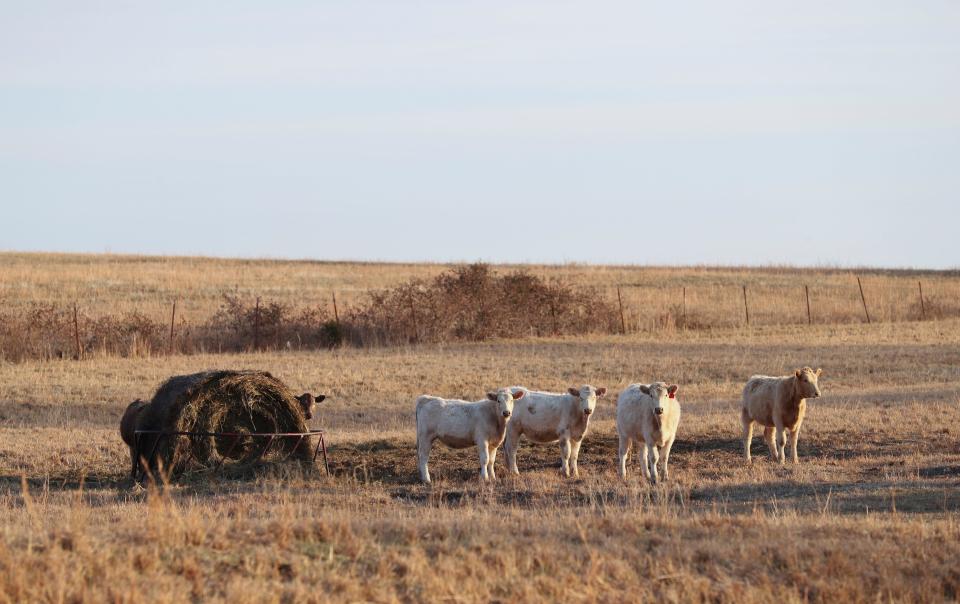

In rural Oklahoma, agents say Pierson began an elaborate scam making designer knockoff assault rifles.
Pierson first hit agents’ radar in March 2014, when ATF agents discovered Pierson, already a convicted felon barred from even owning a single gun, created the username “Ozarkcart,” and in 2013 bought parts easily restorable to turn into functioning machine guns, Starr said.
ATF agents hoped to find Pierson on Sept. 30, 2014, when they crept up on his family farm in Jay, Oklahoma, 83 miles northeast of Tulsa. Nearly a dozen agents in tactical gear rushed in, searching every closet and corner.
Cook, also known as Betty Kendall, shouted, “what are you guys doing here?” and cursed at the agents.
“We finally got her calmed down,” said Sandoval, one of the ATF agents who searched the home. He briefly spoke to Pierson on the phone and urged him to return to the U.S., but Pierson said he didn’t know when that would happen.
The federal raid of an area home is now legendary in the small community, said Eddie Wayne Peacher, who works for an Oklahoma City engineering company. His family now owns the property.
“They nicknamed that place ‘Machine Gun Corner,'” Peacher said of local residents. “Apparently, he was selling automatic weapons out of the garage.”
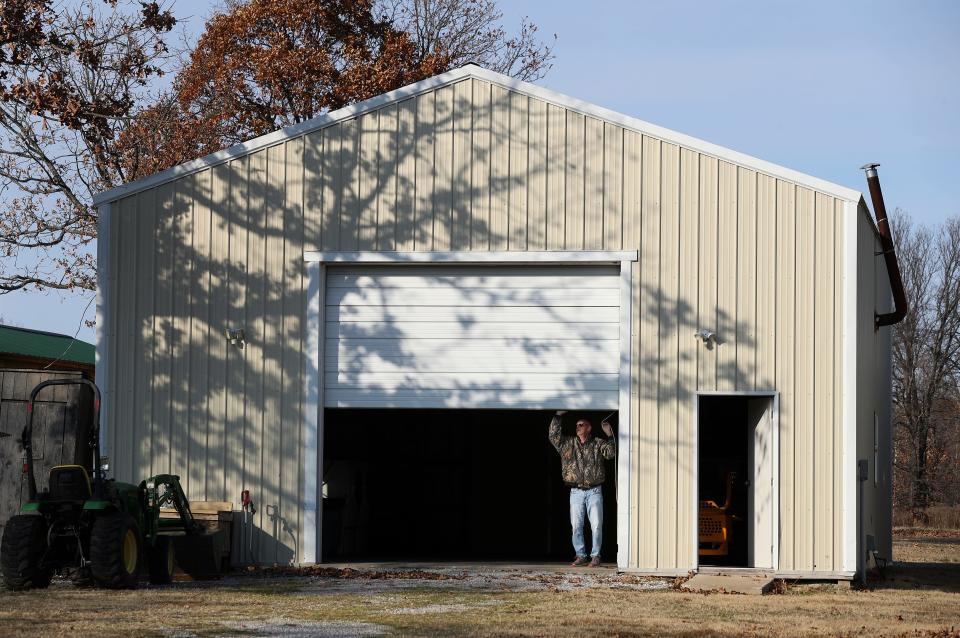

Cook told agents boxes came and went, but she thought they contained car parts.
Agents say Pierson organized the shipment of lower receivers, the lower part of assault rifles, to a man in Northern California who engraved the homemade guns with markings resembling those of the Colt’s Manufacturing Co., a favorite brand of cartels. The fake stamp included a serial number and the location of Hartford, Connecticut, where legitimate Colts are made.
From here, the gun parts were mailed to a gunsmith who lives near Little Rock, Arkansas, who specializes in coating weapons with a dull, black ceramic-based finish that protects against scratches.
“They came from California, and they wanted them coated and shipped to Nuevo Laredo,” the gunsmith told a reporter, asking for his name to be withheld for his protection. “That’s kind of a weird direction to be going. Every alarm bell in my head was going off.”
He knew that Colt didn’t have a factory in California and didn’t sell lower receivers, only fully assembled guns.
Colts are the upper echelon, he said, compared to the parts sent to him, which were of “far less quality.”
The gunsmith tipped off Little Rock ATF and agent Starr launched an investigation in August 2017 that led him to Pierson after the agent and a U.S. Postal Service Inspector traced bank records and online purchases.
Starr, a veteran ATF agent, asked for help from ATF’s attaché in Mexico in 2017.
In December, the Mexican Attorney General’s Office sent police to search Pierson’s home, They used a flat bed truck to haul away evidence, including machines to make firearms, machine gun parts and bins of ammunition, including .50-caliber bullets capable of ripping through tanks and downing aircraft.
The federal officials in Mexico drove the evidence to a warehouse outside the city to keep it out of reach of any corrupt local police. The ATF attaché was allowed to photograph the evidence, later used in the Arkansas case.
If Pierson serves his time and is released from an American prison and crosses the border again, the Mexican government could prosecute him on their own charges.
‘Where are your guns? Where is your shop?’
Pierson’s time in Mexico came to a traumatic halt on Dec. 10, 2018. What follows is his version on that day:
He headed home for lunch at about 1:30 p.m. and pulled into his gated community, a three-minute drive northeast of the U.S. Consulate. Four men in plain clothes hopped out of a red car with guns drawn and pulled him out of his Chevrolet Silverado, saying they were “internal security.”
Three men searched his truck while the one in charge questioned him. Then, Pierson spotted a white Chevrolet truck with brown fenders and a state police emblem.
Officers dressed in black uniforms with helmets and body armor walked up to Pierson carrying machine guns, ordering him into the back of their truck. They pulled his T-shirt over his face.
At first, Pierson wasn’t too concerned. He knew this kind of thing happened in Mexico. He thought he was being arrested on some minor charge.
He peeked through the thin threads of his T-shirt and watched as the truck made a series of turns. When they passed the courthouse and headed out of town, the panic hit.
The truck drove off the main highway, onto dirt roads, and stopped near a dilapidated shack. Then, Pierson saw industrial-size barrels, the ones used by cartels to dispose of human remains.
Sitting on a metal bench in the back of the truck, he tried to plant his feet to resist being moved. He said one of the men struck him in the head with the butt of a shotgun, knocking him out.
When he came to, men were dragging him toward the building.
“My head hurt,” he recalled. “I was seeing stars.”
He overheard two of the men questioning: “If they chop the fat one up, how long is it going to take to put him in the barrel?”
Pierson spotted a metal pole protruding from a concrete slab and he raced to it and hung on to resist being pulled toward the barrels.
Someone kicked him in the back, causing him to let go of the pole and topple to the ground.
“This was the most pain I had ever been in,” Pierson said. “I was moaning. It took my breath away.”
One of the men asked him: “Where are your guns? Where is your shop?”
He gave the address of the auto diesel repair shop, which police found abandoned a month earlier.
The man persisted: “No, no, no. We want the shop where you make guns.”
Pierson, who denied manufacturing guns, shook his head in disagreement. The man smacked him in the back of the head and, in Spanish, told him not to lie.
They had been at the rural location for a few hours. It was getting dark and cold.
The officers ordered Pierson back in the truck and pulled his T-shirt over his head, but this time the night sky obscured his view. They drove until they reached a secure parking lot near the Nuevo Laredo bridge to the U.S.
Pierson spotted two trucks full of Mexican military. He said one of the state police officers threatened: “They’re going to get their answers.”
Pierson said the military unit asked more questions as he continued to lie, claiming: “I don’t know anything about arms.”
He tried bargaining, promising not to report anything that happened if they let him return home.
Then he took more of a forceful tone, claiming he was a Mexican citizen with the right to see a judge. “I want my bail. I want my lawyer.”
An officer told him he was wanted in the U.S. Pierson later recalled: “That’s when my jaw dropped. I was like, ‘Oh my God. All of this is because of the Americans.'”
Police handcuffed Pierson, and two men pulled on his arms and two tugged at his waist until they reached the midway point of the bridge.
He said a deputy U.S. Marshal took him into custody. Customs officials patted Pierson down for weapons, fingerprinted and photographed him, claiming they didn’t see any signs of abuse.
An ATF agent from Laredo teamed with the Homeland Security Investigations agent to question Pierson at an area jail.
After the interview, Pierson collapsed on the floor.
He claims he feared he was about to die from a heart attack. Doctors at an area hospital found one minor contusion on his back, but no signs of the extended abuse he described. They attributed his health problems to diabetes and obesity and released him within a few hours.
Pierson’s attorney unsuccessfully fought to get his statement tossed out because of the alleged misconduct by Mexican police. A judge in Arkansas and an appellate court ruled that U.S. agents weren’t complicit if abuse happened across the border.
Pierson also claimed his father is Mexican, giving him Mexican citizenship — something both countries dispute. Pierson’s mother told agents her son and his father are from Virginia, and she is a native of Iowa. Pierson claimed he was entitled to an extradition hearing before a Mexican judge.
A deputy U.S. Marshal testified that Pierson returned to the U.S. voluntarily, fearful the cartel would hear of his arrest and get to him if he ended up in a Mexican jail, according to a transcript of the suppression hearing. He knew secrets and had met high-ranking cartel members.
During his sentencing hearing, Pierson addressed the judge and blamed the cartel.
“When the cartel first approached me, I thought it was a way to get out of their ill graces when they would come around and tax me” Pierson said. “I wish I had had more of a backbone. And I really wish I hadn’t stopped in Nuevo Laredo.”
Assistant U.S. Attorney Anne Gardner successfully argued for a prison sentence higher than the federal guidelines, saying: “He stood here today and testified and barely took responsibility for anything.
“He is a con man, your honor,” the prosecutor said. “He’ll get out, and he’ll find another con.”
This article originally appeared on Louisville Courier Journal: Oklahoma man cons Mexican drug cartel with counterfeit Colt guns
Source link
